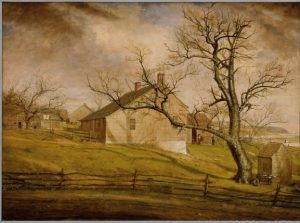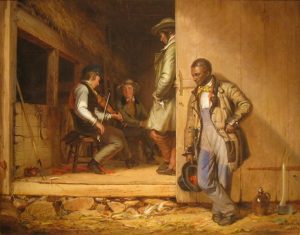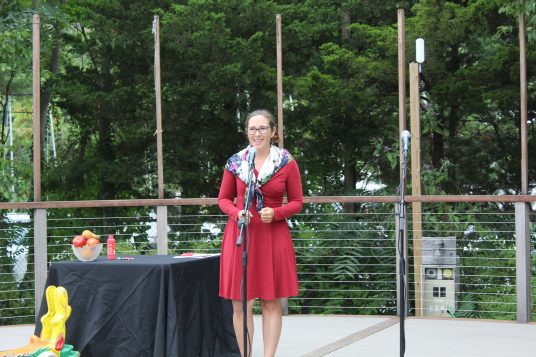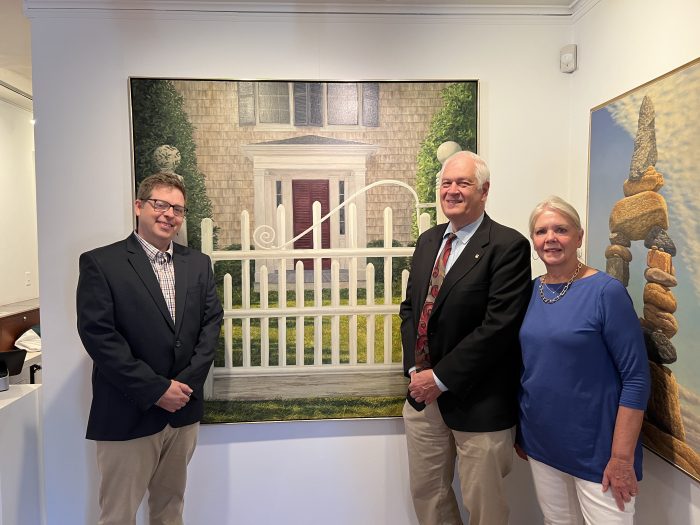By Tara Mae
Idyllic, intimate scenes of small town life and sublimely serene landscapes. Warmly illuminated faces, too often absent in American fine art, immortalized for generations. William Sidney Mount’s art both embraced and defied the standards of the 19th century.
Through this prism, the Ward Melville Heritage Organization (WMHO) will present a special program titled “William Sidney Mount and Long Island’s Free People of Color” at the Brewster House (c. 1665) in Setauket on Saturday, Sept. 24.

The talk by Katherine Kirkpatrick and Vivian Nicholson-Mueller, co-authors of The Art of William Sidney Mount: Long Island People of Color on Canvas, will explore the identities and lives of the 19th century Black, Native-Black and Black-White people who Mount portrayed in many of his works as well as their ties to the Three Village community.
During the presentation’s two sessions, from 1 to 2:30 p.m. and 2:30 to 4 p.m., Kirkpatrick and Nicholson-Mueller will discuss researching and writing their book, which delves into some identities of Mount’s most notable subjects: people who are largely missing, erased, otherized, or caricatured in American art of the 1800s.
Each session will be followed by a Q&A segment, book signing, artwork presentation, and tour of the Brewster house.
“[Kirkpatrick and Nicholson-Mueller] put forward research that makes you want to ask more questions and think about who these people were…What were their lives like? Who were the other people that lived here? What were their relationships like?” said WMHO’s President Gloria Rocchio.

Among the individuals that the book and presentations will highlight are Henry Brazier, the left-handed fiddler in Right and Left (a portrait that is a stark departure from the racist caricatures of Black fiddlers typical of the time); George Freeman, the lively musician in The Banjo Player; Robbin Mills, the attentive outside audience in The Power of Music; and, Rachel (who’s last name will be discussed at the presentation), the poised fisherwoman in Eel Spearing in Setauket.
Mount’s portrayal of these people is noteworthy in its normalcy. Rather than racist caricatures, at the time a prevalent American representation of any nonwhite person, he painted people as they were: members of the local community.
So it is arguably a bit jarring to learn that, despite what much of his art might imply, Mount was not a abolitionist, an incongruous revelation that Kirkpatrick and Nicholson-Mueller address in the book and will acknowledge in the talks.
“Mount was a complex man,” Kirkpatrick said. Despite the multitudes he contained, Mount’s artistic aims appear simpler: inspired by historical paintings he admired, Mount painted what he knew.

And, Mount knew Long Island, particularly the Brewster house, which is now owned by WMHO and was restored in 1968 to appear as it did in his painting Long Island Farmhouses which is now hanging in the Metropolitan Museum of Art. Mount even parked his mobile studio on the Brewster property while painting other farmhouses.
Beyond his appreciation for the landscape, Mount was also acquainted with the Brewster house’s inhabitants. George Freeman of The Banjo Player and Rachel, of Eel Spearing in Setauket, who may have been a Brewster, were just two residents that Mount painted, according to Kirkpatrick and Nicholson-Mueller.
While some structures featured in his landscapes, like the Brewster House, have had both their facades and histories preserved, not much has been cohesively published about the people who populated his paintings, many of whom were friends, neighbors, and townspeople.

by William Sidney Mount, 1847
Rocchio sees “Color and Canvas…” as a way of correcting the apparent information vacuum. “I am looking forward to seeing people’s reactions to learning more about who lived and worked in the Brewster House…Any time we can bring out new information about the properties that we own, we are incredibly interested in the projects,” Rocchio said.
It was such a search for knowledge that first drew educator and genealogist Nicholson-Mueller to the project. While on a quest for genealogical discovery, she learned that she is probably a descendant of Mount, the Brewsters, and many of the people he captured on canvas, including Mills, of The Power of Music.
Having already bonded over a shared loved of history after meeting at the home of a mutual friend, she teamed up with Kirkpatrick, a historical fiction and nonfiction author, who grew up in Stony Brook.

“The research was a gift to myself; and it is Vivian’s and my gift to the people of the Three Villages, St. James and Smithtown. The details we put together will broaden people’s perspectives and knowledge of familiar places,” Kirkpatrick said.
Each woman already had connections to the WMHO and were looking to work on a project together. Kirkpatrick is the author of Redcoats and Petticoats, a children’s book told through a young boy’s perspective about the British occupation of Long Island during the American Revolution and the Culper Spy Ring. Research and other projects have put her in contact with the WMHO over the years.
Nicholson-Mueller has worked as a volunteer docent for the WMHO at the Thompson House, another historic property it owns. She has also conducted research on the Brewsters and Thompsons.
So, history is both a personal interest and professional passion for Kirkpatrick and Nicholson-Mueller. “Color on Canvas…” is a continuation of their efforts to make the past come alive for modern audiences by broadening the palette of people’s understanding.
“I am hoping that people learn about Mount as an individual; about the lives and history of the people of color who lived in Brookhaven during this period and have heretofore been neglected or ignored,” Nicholson-Mueller said.
Tickets to “William Sidney Mount and Long Island’s Free People of Color” at the Brewster House are $8 per person; space is limited and anyone interested in attending must register in advance by calling 631-751-2244.
————————————————————————————–
There will two additional local events to celebrate the book launch of The Art of William Sidney Mount: Long Island People of Color on Canvas:
On Sunday, October 2nd, the Long Island Museum, 1200 Route 25A; Stony Brook, will host an Author’s Talk on Oct. 2 at 2 p.m. It will include a presentation by Kirkpatrick and Nicholson-Mueller as well as a book signing, banjo and fiddle music, refreshments and a gallery tour, where The Banjo Player and Right and Left will be on display. Fee is price of admission. Visit wwwl.longislandmuseum.org.
On Monday, Nov. 14, at 7 p.m., the Three Village Historical Society will host a Zoom lecture with the authors. The event is free for TVHS members, with a $5 suggested donation for nonmembers. Registration is through www.tvhs.org/lecture-series. For more information, call 631-751-3730.





















































